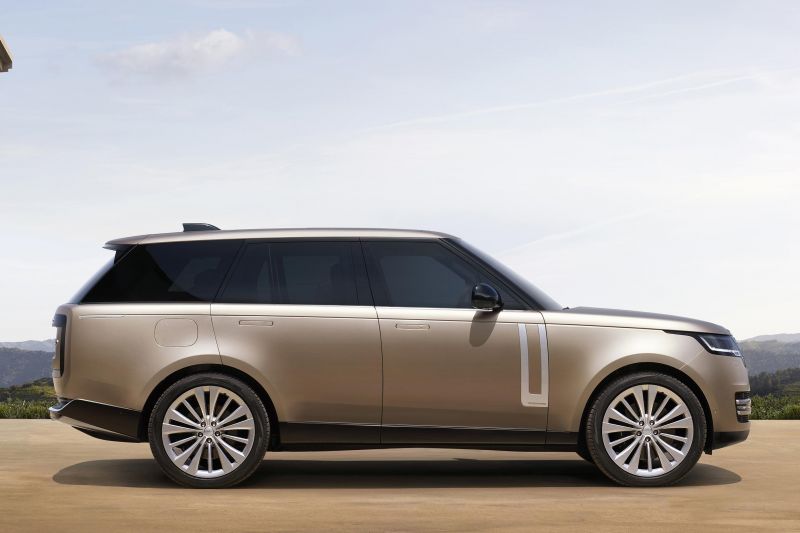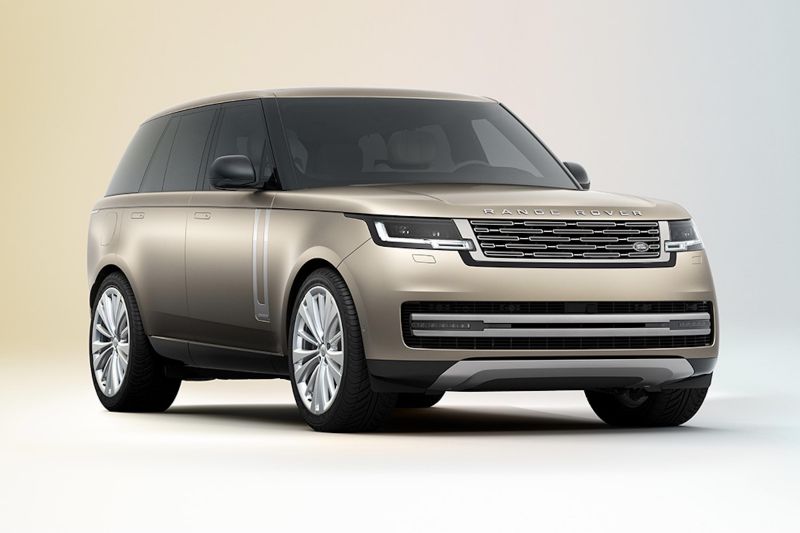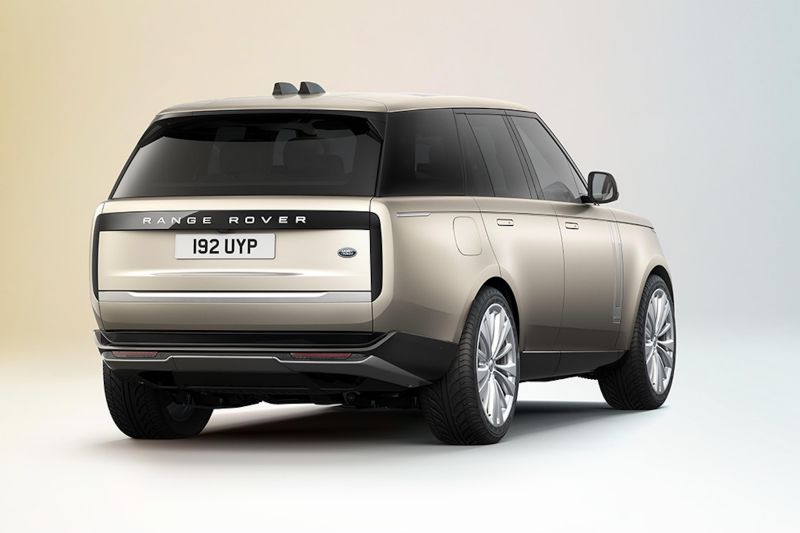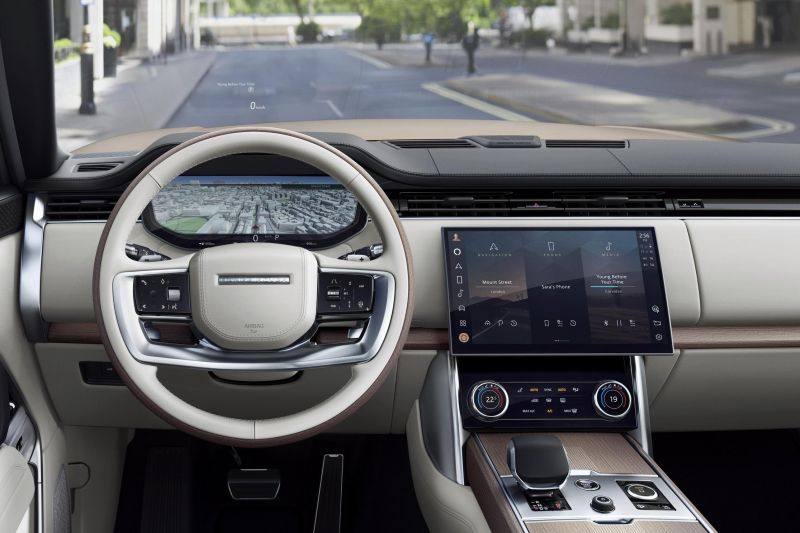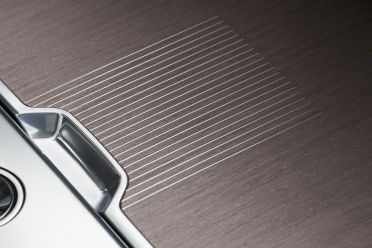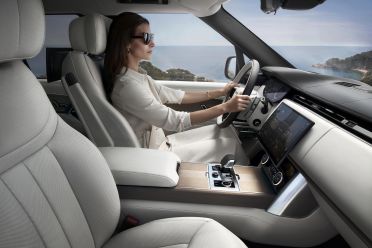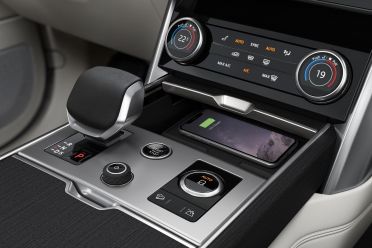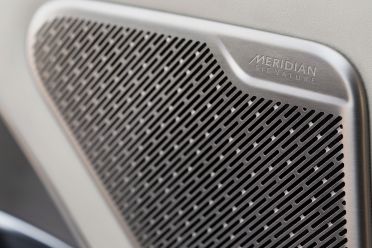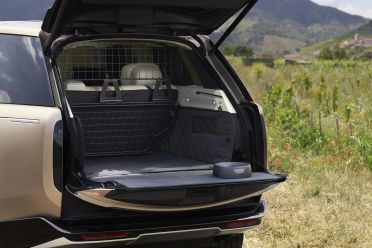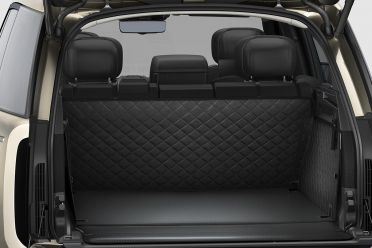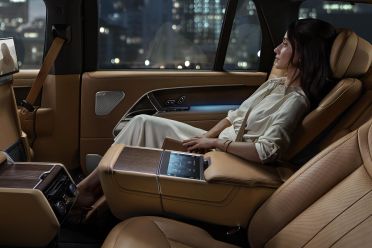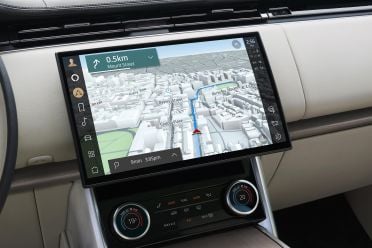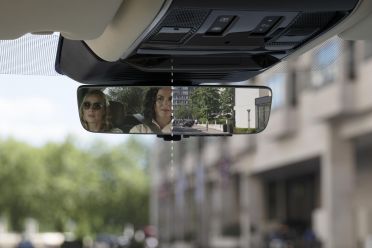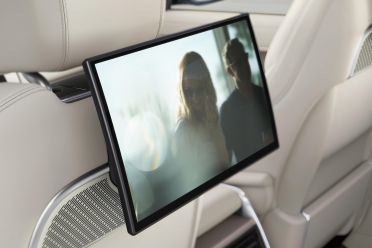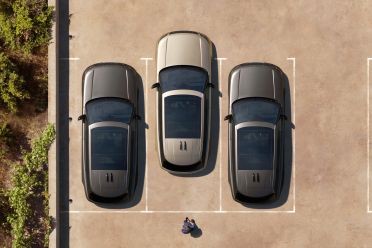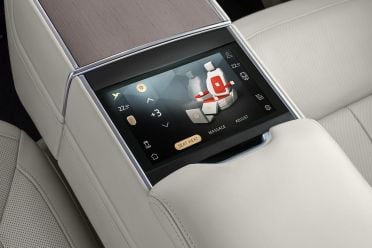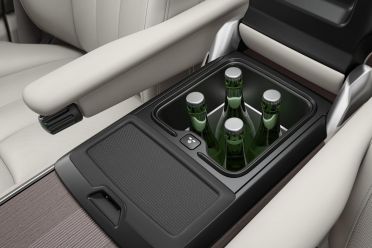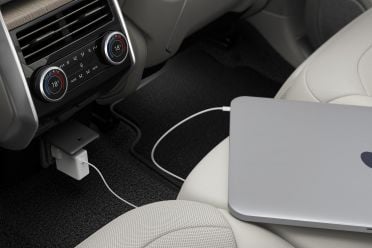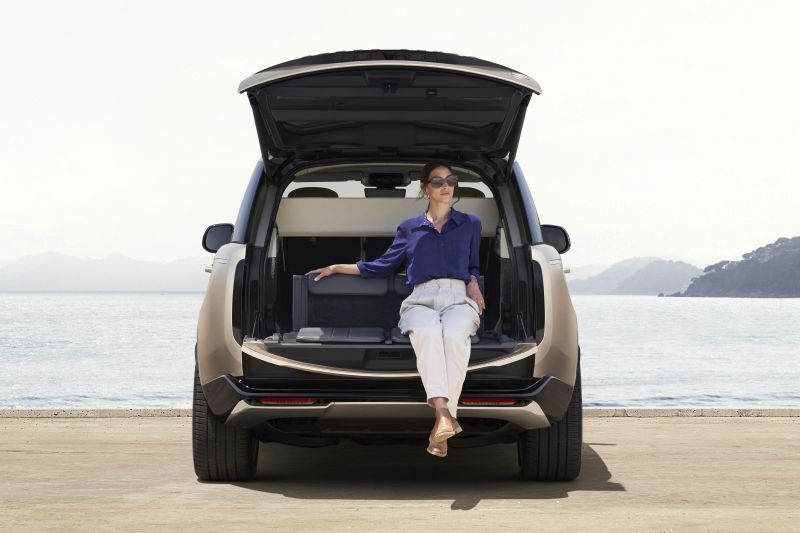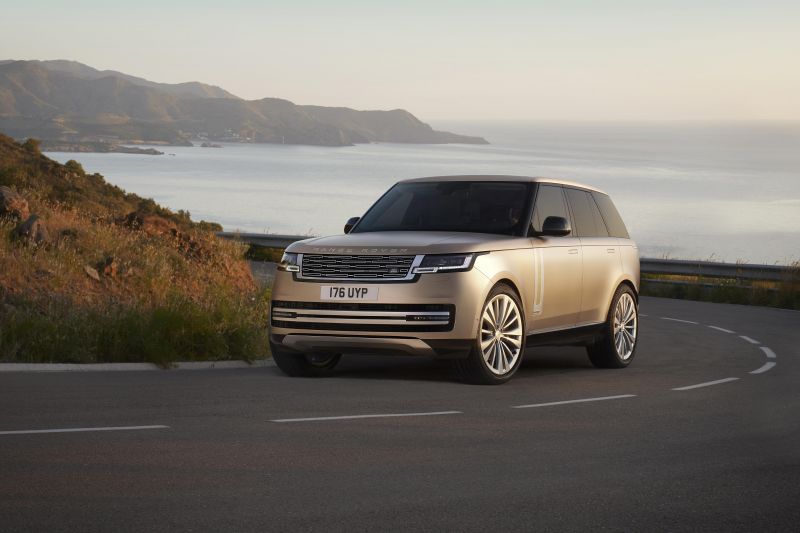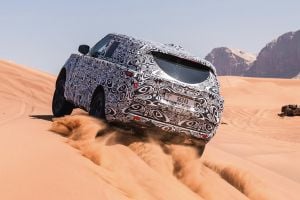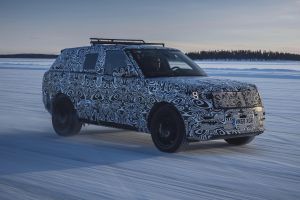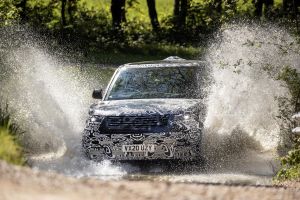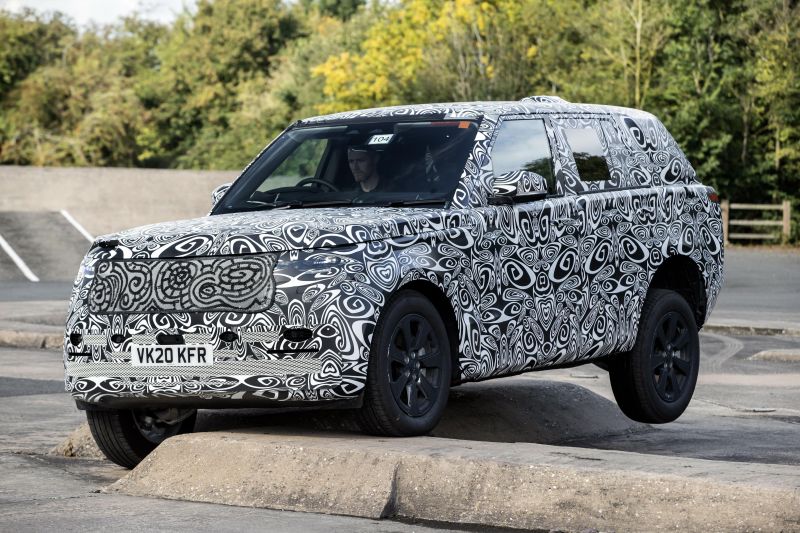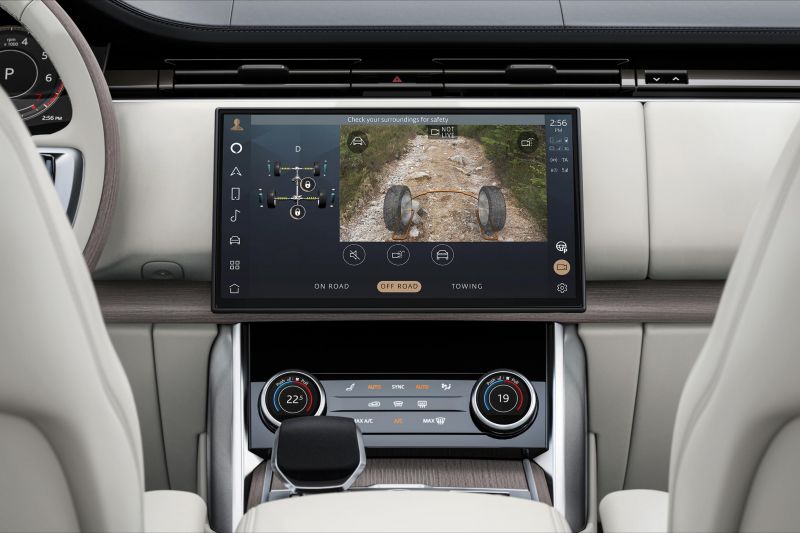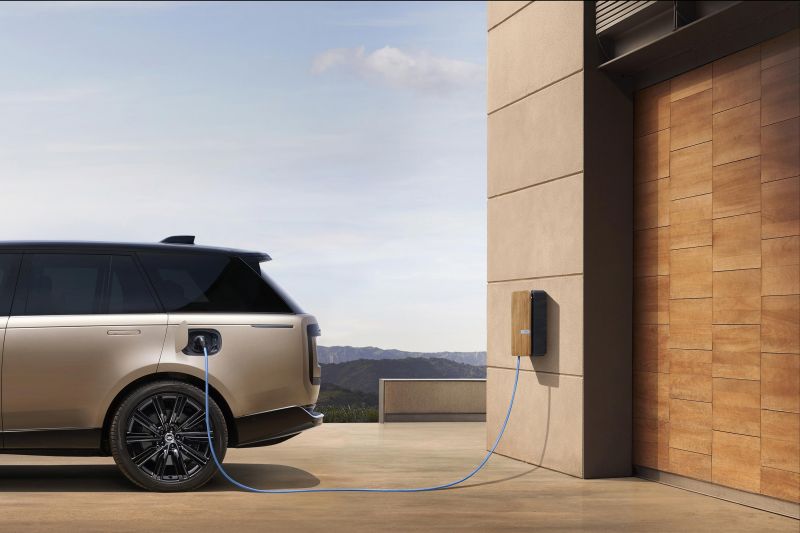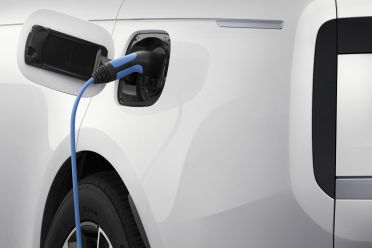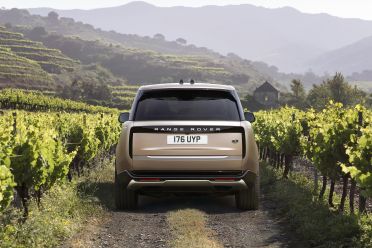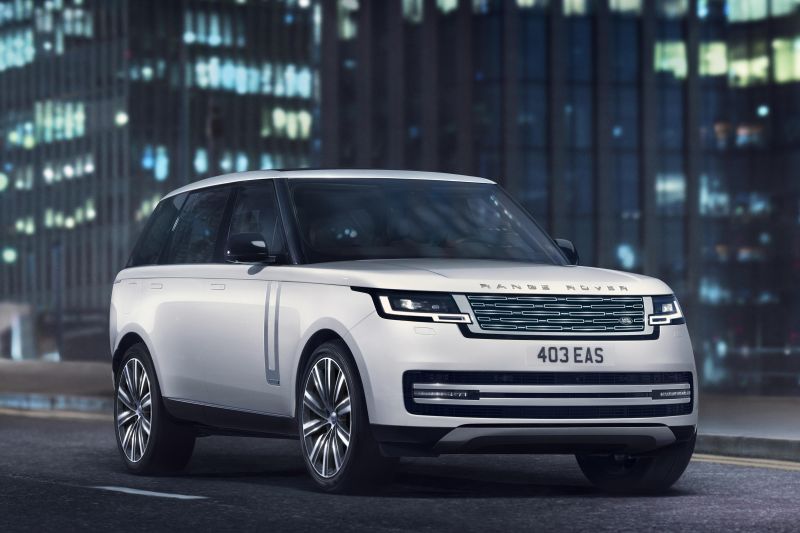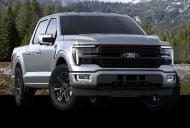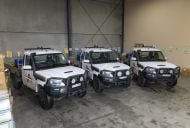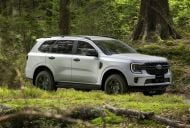A brand new Range Rover is an uncommon occurrence, this being just the fifth generation since the 1970 original changed the world.
This iteration still puts refinement and comfort front-and-centre, but underlays it with more cutting-edge technologies befitting its flagship status.
While the looks are signature it’s new from the ground up, replete with a model-first seven-seat (long-wheelbase) option, new engines including a 4.4-litre V8 and plug-in hybrid with 80km electric range, and a new Range Rover SV spec level.
MORE: 2022 Range Rover revealed
MORE: 2022 Range Rover Australian market price and specs
Range Rover design
Bluff nose, clamshell bonnet, short overhang, strong horizontal belt-line, falling and floating roofline, tapered ‘boat tail’ rear – you won’t mistake it for anything else, even though the roof is 10mm lower and the (optional) 23-inch wheels are bigger than ever before.
“It is quite simply the most desirable Range Rover ever created,” says Jaguar Land Rover (JLR) chief creative officer Gerry McGovern OBE. No pressure, then.
Its grille contains an absorbing graphic and the headlights intersect with its frame. Light reflects and refracts off the daytime running lights for an effect designed to look like cut glass. The fog lights, radar, and front sensors are concealed neatly within the flush lower aperture.
The LED headlights have a 500-metre beam range, and the adaptive high-beam function is controlled precisely because each headlight unit contains 1.2 million individually controllable digital micro-mirrors that can cast up to 16 specific shadows.
JLR says it wanted to impart a sense of the car being honed from one solid piece, citing the clean vertical side graphic and the deep feature line running all the way under the belt line as examples.
Double-glazed side windows sit nearly flush with the pillars, which are colour-coordinated to make the laser-welded aluminium (inlayed with panoramic glass) roof ‘float’.
The back is more of a departure, stylistically speaking: The tail lights are encased in a large gloss black panel and hidden until lit.
“From the proportions to all the surfaces, from the flush details like the glazing, side vents, the hidden waist finisher, all the way to the hidden until lit technology of the tail lamps. Everything is so pure and free from any superfluous ornament,” reckons JLR design director Massimo Frascella.
Paint options for the new Range Rover include a selection of 12 solid, metallic and premium metallic shades, among them new Lantau Bronze, Belgravia Green, Batumi Gold and Charente Grey. A sample service provides limitless scope for customisation
Range Rover interior
The seating position is as commanding as ever behind the thin-rimmed wheel, the dash top sits low by contrast to enhance the feeling of height, and the 13.7-inch digital instruments sitting behind a glass panel are suitably sharp and augmented by a head-up display.
The curved 13.1-inch centre touchscreen runs the latest JLR Pivi Pro software and offers haptic feedback. The customisable home screen is designed to make 90 per cent of tasks no more than two taps away, while it is said to pinch-and-zoom like a phone.
JLR says it wants to “redefine luxury materials in the automotive sphere” and cites its dealings with textile company Kvadrat. Semi- and near-aniline leather remains of course, but there’s also wool blend fabric and man-made leather, and mats made from recycled plastics.
“These responsibly produced [real] leathers have the natural finish and tactility of furniture grade leather, with advanced techniques used to increase the utilisation of every hide by 10 per cent – saving over 42kg of CO2 equivalent per vehicle,” JLR adds.
Other material choices including open-pore wood with micro-metal inlays, and cold steel finishes, make the photo car look a little Scandi…
This middle seating row meanwhile has two 11.4-inch HD touchscreens with HDMI ports and a WiFi hotspot. There’s more room than before, and you can opt for a three-seat bench or an executive version with two recliners between which sits a pull-down armrest with touchscreen controls.
For the first time a Range Rover comes with seven seats as an option in LWB (200mm more wheelbase) models, and rather than piddly stowaways the heated third row pews are designed to cosset adults in similar “stadium seating”, with their own temperature controls and plugs.
There’s still a handy 312L behind the third seats, enough for a few suitcases. When not in use they electrically fold into the floor.
The signature split tailgate with fold-down section has always been a nice place to sit, but in this new Range Rover you also get a piece of floor that lifts up to either partition loads or become a seating backrest, replete with its own cushions and soft backrests.
As if to reinforce the message that it’s improved quality, JLR says the partition has been engineered to withstand forces of up to 750Nm and has been subjected to 10,000 use cycles.
Range Rover technology
The infotainment has a backup battery providing immediate startup so you can commence music or navigation as soon as you get behind the wheel.
The system also features two eSIMs, which ensure over-the-air updates can be completed faster without disrupting bandwidth for applications such as streaming. JLR’s new electric architecture enables software over-the-air updates and uses 69 individual ECUs.
Headline cabin tech includes a 1600W Meridian sound system, up to 1kHz of active noise-cancellation counter-sound pumped from each main headrest, an embedded voice assistant powered by Amazon Alexa, embedded Spotify, and wireless charging and smartphone mirroring.
There’s also a remote parking feature whereby you remotely control the car via app when standing close to it – useful if you’re in a tight bay. You can also get an Activity key, which takes the form of a water-resistant and shock-proof rubbery wrist band.
You get 360-degree camera, a rear-view camera display in the rear-view mirror, ClearSight Ground View “transparent bonnet technology” to visualise the area hidden by the bonnet on the touchscreen, and LED ‘downlighters’ create a pool of light around you where you’re reverse parking.
The cabin air purification system has been replaced and can significantly reduce bacteria and virus (including SARS-CoV-2). The system condenses moisture from interior air and breaks into electrically charged particles that react with contaminants in the cabin air.
The doors are power-assisted, so a partial pull on the handle from inside or out prompts the door to operate itself. It has anti-pinch and uses the car’s sensory system to recognise and hopefully mitigate potential impacts from parallel traffic.
The driver’s door can also be closed by pressing the brake pedal, and other doors can be opened from the touchscreen or a switch near the grab handle. These pair nicely with the auto-lowering air suspension (when static) and electronically-deployed side steps for maximum entry theatre.
The setup has supposedly endured 84,000 use cycles, in temperatures as low as -30 degrees.
Platform and dynamics
Under the body sits a new modular longitudinal architecture called MLA-Flex housing a wheelbase that’s at least 75mm longer (200mm longer again for the LWB model), and a stiffer body made from 80 per cent aluminium with core structural pillar ‘rings’ made from steel.
The steel front bulkhead features a closed-section arrangement which provides a double-glazing effect – thus transmission of noise and low-frequency vibrations from road surfaces into the cabin is a claimed 24 per cent lower than in the previous generation.
Land Rover engineers used the Articulation Index – a measure of the ability to hold a conversation – to assess the refinement of the interior, and the new Range Rover is billed as the quietest vehicle of its kind in the world with road, wind and structure noise “all but eliminated”.
The ‘intelligent’ air suspension restricts roll and pitch by calibrating on approach to individual bends – JLR says the air springs and twin-valve dampers react within five milliseconds and can prepare for what’s head by linking to the active cruise control. There’s also 48V active roll stabilisation.
One trick new feature is rear wheel steering (opposite direction at slow speeds and same direction at high speeds) to give it a smaller turning circle. There’s also a new five-link rear axle setup and a retained full-size spare wheel.
The always-on all-wheel drive system’s brain monitors tyre grip levels and your inputs 100 times every second and channels torque between the axles and across the rear axle. There’s a 50:50 rear diff locker and it also has the same Terrain Response 2 4×4 system as the Defender.
| Standard wheelbase | Long wheelbase | |
|---|---|---|
| Length | 5052mm (+52mm) | 5252mm |
| Width | 2209mm | 2209mm |
| Height | 1870mm | 1870mm |
| Wheelbase | 2997mm | 3197mm |
| Turning circle | 10.95m | 11.96m |
| Wading depth | 900mm | 900mm |
| Clearance | 295mm | 294mm |
| Roof load | 100kg | 100kg |
Powertrains
Combustion ‘MHEV’ engines include a 3.0-litre inline-six petrol with 294kW and 550Nm, and two 3.0-litre inline-six diesels with 221kW and 650Nm (D300) or 258kW and 700Nm (D350). They use a 48V battery, and harvest brake energy to smooth out the stop/start.
The halo is the 390kW and 750Nm 4.4-litre V8 with two twin-scroll turbos, slashing the 0-100km/h dash to only 4.6 seconds.
All use a ZF eight-speed transmission with a set of low-range ratios, and maximum towing is 3500kg. The unladen weights for the SWB sit between 2454kg and 2585kg, with the LWB topping out at 2725kg in heaviest guise.
Moving past this, though, the headline act is a much improved inline-six petrol plug-in hybrid EV with 375kW and 700Nm outputs, a 38kWh battery, and a claimed 80km on electric-only range. Plus, DC charging capability at 50kW.
The first fully electric Range Rover BEV arrives in 2024.
I want to know more…
Australian orders for the main ICE range open October 28, and deliveries will start in June 2022.
Orders for the plug-in hybrid and the higher-end SV range open in January 2022, and deliveries for those will commence in the second half of 2022.




